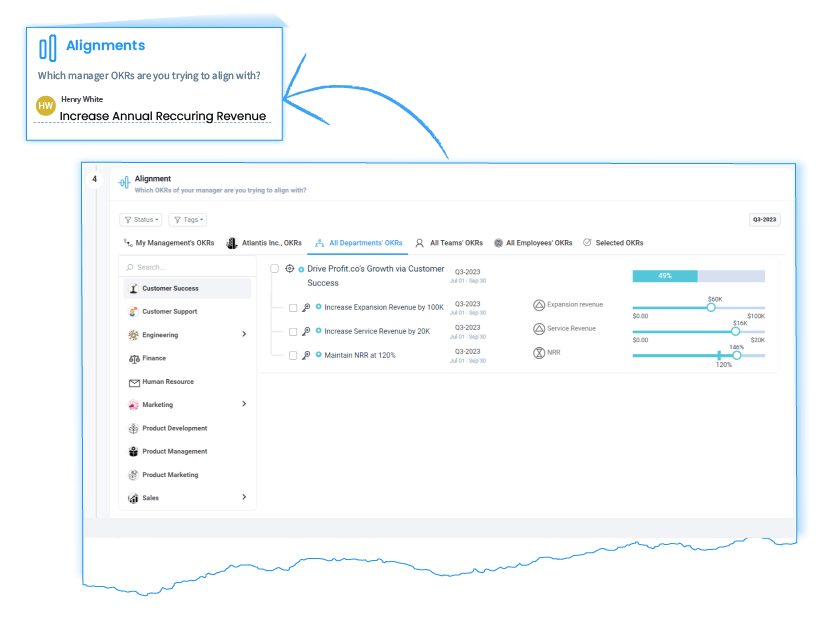Alignments enable employees to comprehend how their goals contribute to the mission of the company.
Alignment is a fundamental component of OKRs.
It allows companies to synchronize their priorities and concentrate their efforts on shared goals. By establishing alignment, a direct connection is created between OKRs at various organizational levels, effectively determining accountability for specific key results.
Alignment ensures that individual employees, teams, and even departments collaborate towards shared, higher-order objectives. This fosters enhanced employee engagement since individuals can perceive the direct impact of their daily contributions on the entire organization through aligned OKRs.
There are two alignment options available. The first is top-down alignment, where higher-tier key results are transformed into lower-tier objectives. For example, company-level key results can serve as departmental objectives. The second option is bottom-up alignment, where lower-tier objectives are elevated to become higher-tier key results. For instance, individual-level objectives can be utilized as department-level key results.
